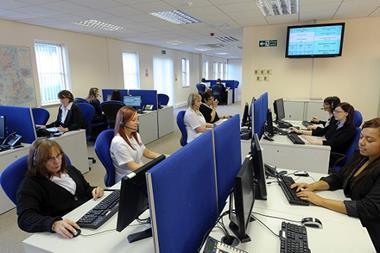Trade barriers and a curb on immigration are likely to have a significant impact

Post-Brexit trade barriers and changes to the free movement of labour will likely have a significant impact on the UK construction industry.
Following the UK’s decision to leave the European Union, companies have been left wondering how Brexit will impact on their business.
Much will depend on what the post-Brexit trade deal between the UK and the EU will look like. This is yet unclear as official negotiations are not set to start until March 2017, but it is likely trade barriers will appear in a variety of forms.
Border controls could be reinstated for example, leading to delays in the physical movement of goods and a potential increase in administration and costs for customs clearance activities.
Camilla Hagelund, senior analyst, Europe and Central Asia at Verisk Maplecroft, explains: “Exit from the customs union would lead to compliance and administrative costs for businesses, which would have to prove the origins of their products in line with rules of origin and the common external tariff policy. The cost of this has been estimated to range from 4% to 15% of the cost of products, and so for low-tariff goods, companies would likely choose to pay the tariff instead.”
As of yet, the Brexit vote has not raised trade barriers for businesses with continental supply chains, she adds. However, the depreciation of the pound sterling has increased the cost of imported commodities, parts and supplies.
Another major Brexit-related risk is access to talent, which could be jeopardised by a curb on immigration. This is of particular concern for the construction industry, which relies heavily on European workers. Between 2007 and 2014, the proportion of EU migrants in the construction sector rose from 3.65% to 7.03%.
“There remains much uncertainty over what form Brexit will take but considering the pronouncements of the UK government so far, it is clear that the free movement of labour will not continue in its current form,” Hagelund says. “This threatens the supply of immigrant labour from the EU, which has been important both in terms of high- and low-skilled jobs.”
In order to mitigate these risks, Lisa Callinan, research director at Gartner, recommends companies to map customers, suppliers and trading flows in a simplified format. “As part of your scenario planning, begin thinking about how customs clearance processes will be managed and evaluate the potential impact on human resources and access to talent.”
She adds companies need to understand the best and worst case scenario for them and break the scenario planning into impact/risk assessment under four headings: processes, infrastructure, people, and information flows and systems.
Hagelund also highlights the importance of scenario testing. “On the basis of this, the cost and benefit of contingencies can then be assessed, as well as the time frames required for their implementation. Contingencies include options such as relocating to an EU member state, thus, maintaining single market access – or increasing sourcing from within the UK.”
How to prepare for the future now
Gartner’s Callinan lists eight steps to ensure your business is ready for a post-Brexit world:
- Think about information and financial flows – ensure transparency
- Understand where your organisation makes profits and how this will change following Brexit
- Make sure your partner relationships are strong
- Reassure your international workforce
- Assess whether Brexit will result in an improvement in competitive advantage for your business
- Network with peers and get engaged with the conversation
- Understand cost to serve. Opportunities may be reduced in some markets but may increase in other markets
- Scenario plan for the long term – what is important right now may not be important in five years




















No comments yet